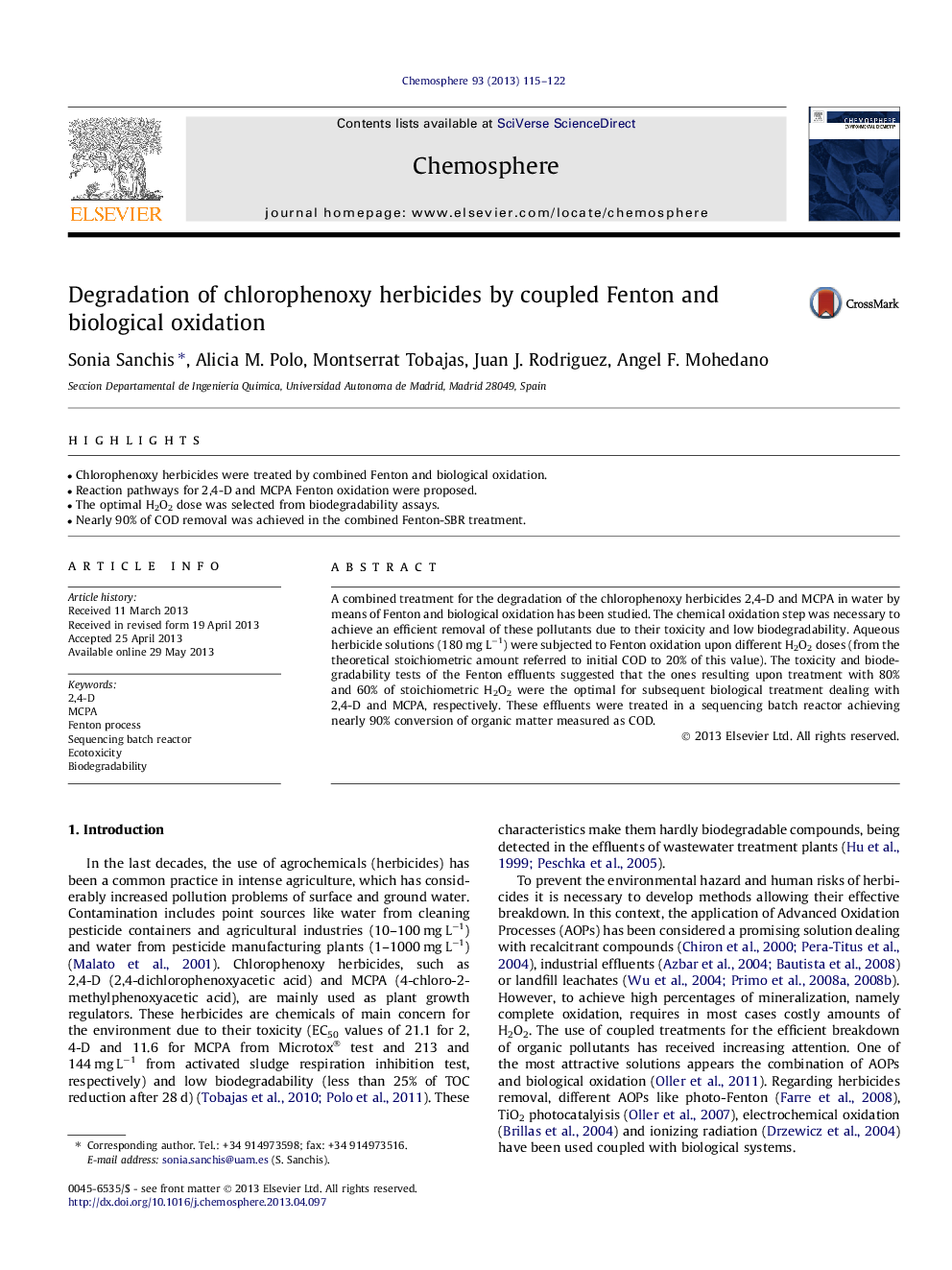| کد مقاله | کد نشریه | سال انتشار | مقاله انگلیسی | نسخه تمام متن |
|---|---|---|---|---|
| 4409019 | 1307457 | 2013 | 8 صفحه PDF | دانلود رایگان |

• Chlorophenoxy herbicides were treated by combined Fenton and biological oxidation.
• Reaction pathways for 2,4-D and MCPA Fenton oxidation were proposed.
• The optimal H2O2 dose was selected from biodegradability assays.
• Nearly 90% of COD removal was achieved in the combined Fenton-SBR treatment.
A combined treatment for the degradation of the chlorophenoxy herbicides 2,4-D and MCPA in water by means of Fenton and biological oxidation has been studied. The chemical oxidation step was necessary to achieve an efficient removal of these pollutants due to their toxicity and low biodegradability. Aqueous herbicide solutions (180 mg L−1) were subjected to Fenton oxidation upon different H2O2 doses (from the theoretical stoichiometric amount referred to initial COD to 20% of this value). The toxicity and biodegradability tests of the Fenton effluents suggested that the ones resulting upon treatment with 80% and 60% of stoichiometric H2O2 were the optimal for subsequent biological treatment dealing with 2,4-D and MCPA, respectively. These effluents were treated in a sequencing batch reactor achieving nearly 90% conversion of organic matter measured as COD.
Journal: Chemosphere - Volume 93, Issue 1, September 2013, Pages 115–122